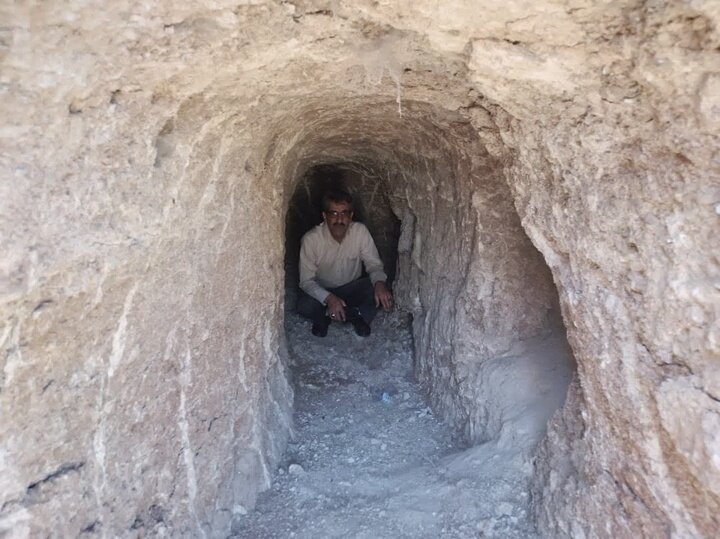Underground Anuj complex added to Iran’s national heritage list

TEHRAN - An ancient underground hand-carved complex, located in the Samen district of Malayer county, has been officially registered on Iran’s national heritage list, authorities announced.
Named Dastkand-e Anuj, the site lies adjacent to the archaeological mound known as Qal’eh Bolandeh on the eastern edge of Anuj village. Featuring a complex network of chambers, halls, and connecting corridors, it is considered one of the most distinctive hand-carved subterranean structures identified in the region.
Anuj village is situated at the southern edge of the Samen plain, along the route connecting Malayer to Nahavand and Borujerd. The area is known as one of the richest archaeological zones in Iran’s western Hamedan province. The nearby Qal’eh Bolandeh mound, dating back to the fifth and sixth millennia BCE, had already been listed as a national heritage site.
The underground architecture was carved into relatively soft limestone and, based on pottery shards, human remains, and structural evidence, contains historical layers dating from the first millennium BCE to Islamic periods. Archaeologists believe some parts of the complex were used for food storage and burials, based on the form and function of the discovered artifacts.
According to IRNA, citing the public relations office of the cultural heritage, handicrafts and tourism department of Malayer, 750 million rials (approximately $850,000) were allocated from provincial funds in 2023 for documentation, boundary demarcation, and the registration dossier. The project was carried out in collaboration with the research department of Bu-Ali Sina University.
Dastkand architecture, also known as hand-carved architecture, refers to structures created by digging into and shaping natural geological formations, primarily in Iran and other foothill regions. It is a unique form of architecture that utilizes the earth itself as the building material, often without the use of crafted materials. The term Dastkand in Persian translates to "digging with hands," highlighting the manual process involved in its construction.
AM
